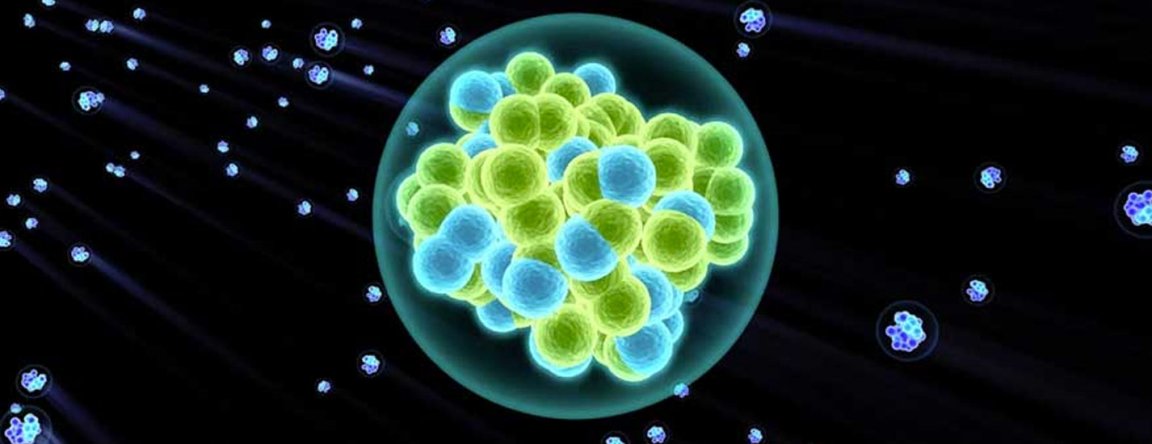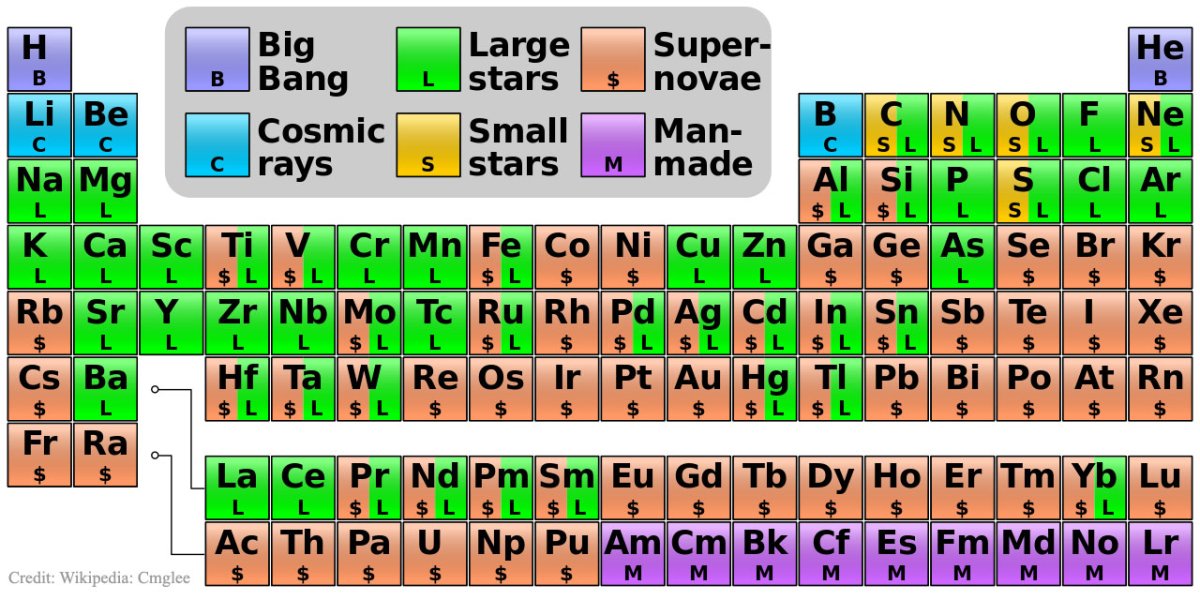
This periodic table showcases mankind’s best estimation as to where each element comes from.
Elements are subdivided into several categories based on where they originated from: The Big Bang, Cosmic Rays, Large Stars, Small Stars, Supernovae, and Man-Made labs.
At the very top, we have hydrogen. Hydrogen and helium are the only elements that (as you can see) are classified under “Big Bang.” There are no other appreciable sources of this in the universe, thus, they are alone in this category.

Let’s take a clear look at the image before moving on with the explanation:
Next, we have 3 elements under the category of “Cosmic Rays:” lithium, berylium, and boron.
The carbon in your body was made by nuclear fusion in the interior of stars, as was the oxygen. Yes, that is right – you are the stuff of long dead stars. Much of the iron in your body was made during supernovae explosions…the fiery blasts of stars that could no longer support themselves and burst long ago and far away.
But it doesn’t end there.
The gold in your jewelry was likely made from neutron stars during cosmic collisions, collisions that may have been visible as short-duration gamma-ray bursts here on Earth.
It’s kind of cool when you think about it – you aren’t just star stuff; you are the the living remnants of massive, cataclysmic events….the walking, talking remains of the death of hypergiant stars.
But then, so is your trashcan.
Interestingly, the periodic table, as we know it today, isn’t the first table of elements. In fact, we once believed that all things in the universe were made from just Earth, Fire, Water, and Air (thankfully, we didn’t stick with that organizational structure).
Of course, today, the Table is a lot more solid and well established than it was when it was first developed. But that is because, at that time, many elements weren’t discovered yet. Conversely, these days, we already have an abundance of elements—meaning that most all naturally occurring elements on planet Earth have already been discovered and the Periodic Table has been mostly filled in. Mostly.
If a new element is discovered, it is generally the result of physicists smashing atoms together to see what happens i.e., a new element is only likely to be discovered in a particle accelerator.